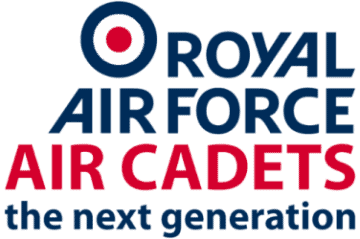The battlespace in which air forces will operate in the future continues to change and evolve.
To meet threats we don’t even yet know about, we must create a next generation air combat system which is agile, flexible, connected, rapid to update, and affordable.
Tempest will bring a ‘plug and play’ approach, where software and hardware can be easily changed in and out depending on the capability and functions needed for a mission. That could be different kinds of weapons, sensors, or fuel tanks.
This innovation removes the usual rigid structures of assembly and will make manufacturing more cost effective and flexible than before.
Achieving the concept
Tempest will provide several modes of operation, combining manned, unmanned and optionally-manned platforms, with onboard and offboard data processing and a range of pilot decisions aids when manned flight is being conducted. This is called scalable autonomy.
Scalable autonomy will be key in the future as operating environments become more complex and threats become more sophisticated and dangerous.
Speed, manoeuvrability and payload will also be key in the future. Our aerodynamicists and engineers are optimising the aerodynamic performance of the Tempest concepts to achieve what we call 'balanced survivability design'.
Powering the next generation of combat aircraft
Tempest needs a range of high-density power and propulsion system to be world beating.
To achieve this we are developing advanced composite materials and additive manufacturing to produce lightweight, power dense configurations capable of operating at higher temperatures.
We're also developing world-leading electrical generation technology and intelligent integrated power management to power Tempest's advanced sensors and effects, particularly those which are laser-based. They will need much more electrical power than previous generations of aircraft.
This integrated power approach reduces the number of energy exchanges, maximising the potential of the gas-turbine as the primary power source.
The development of these electric technologies is also expected to benefit civil aerospace and other sectors in their drive towards a sustainable future.
Wearable cockpit
We're working towards our concept of cockpits without a single physical dial or screen.
Instead, pilots will wear a next generation augmented and virtual reality helmet that will project interactive cockpit displays and controls directly in front of their eyes.
Other pilot support concepts such as virtual assistants are also being developed and tested.
This work is continuing and flight trials are now being planned to test some of these innovations in a real environment.
Battle-winning information advantage
The Tempest operator will be able to think and act two to three steps ahead of their adversary because of the advanced and highly-integrated sensors, non-kinetic effects, and communications systems.
This huge advantage will allow them to take the fight to the enemy and deliver a range of missions including team defence and surveillance.
All of these systems will be highly-integrated, and designed to work seamlessly together, unlike current fighter jets that tend to be separate pieces of equipment, such as separate radar and electro-optics.
Operators will be able to make decisions with more confidence because they are not relying on single sensors. Instead, multiple types of sensors will work in concert to gather information which is automatically cross-checked and cross-referenced by the Tempest system.
Tempest will constantly mine and coordinate data from multiple sources, such as other aircraft, to provide extremely reliable and useable information, that can in turn be shared with other aircraft in a ‘combat cloud’.
Factory of the Future
BAE Systems’ Factory of the Future facility, in North West England, is already showcasing the advanced manufacturing capabilities to revolutionise how we will build, maintain, support and upgrade aircraft of the future.
Technologies, such as augmented reality, additive manufacturing, and collaborative robots will ensure consistent and perfect build quality, whilst significantly reducing build times and costs.
For instance, we have already tested building an aircraft fuselage by robots that were bought off the shelf from the automotive industry.
We are also working to develop fully deployable versions of maintenance and support technologies which can be easily and quickly deployed to operational bases and forward locations.
A digital future
A digital future combat air system will produce unparalleled volumes of data which can be used to transform the delivery of mission support and new capability. For instance, we can create ‘digital twins’ to test new components.
The creation of a digital future will help experiment, innovate, test and prove ideas and technologies faster than ever, and develop systems which are more connected, agile, and adaptive than anything previously thought possible.
Next generation effectors
Innovative weapons systems and effectors are at the heart of Tempest's cutting-edge design and technologies.
Tempest needs to support existing weapons, planned weapons, and the weapons of the future. For instance, the next generation Beyond Visual Range Air-to-Air Missile Meteor and the network enabled precision surface attack missiles of the SPEAR family of weapons, will be optimised for Tempest.
Effectors will be used to protect Tempest by helping to assess and evaluate incoming threats, and then in managing the deployment of the appropriate method to defeat it.
We're also working to make effectors part of Tempest's sensor network, to further enhance the information available to pilots and operators.
Flexible payload bay
Tempest will have the capability to carry weapons internally, rather than being attached externally, to be highly survivable in a combat role.
Operators will be able to carry different payloads, such as fuel tanks and camera pods, to adapt Tempest to a wide range of combat and surveillance roles.
We are working on creating a payload bay that can handle the noise, vibration and other challenges of supersonic speeds. Tests have already been run on this capability in ground-based rigs.
Mission systems
We're contributing to the PYRAMID Open Mission System and exploiting technologies developed in the Ground Based Air Defence command and control domain.
This will enhance the operational effectiveness of Tempest in Air-to-Air engagements.
Sustainability
Sustainability will be at the heart of the UK’s Future Combat Air System.
The FCAS Sustainability Strategy is aligned to both the MoD’s Climate Change and Sustainability Approach and the RAF’s Net Zero 2040 ambition. It highlights how implementing sustainable practices throughout the FCAS Enterprise will: ensure long-term viability for both the programme and the Defence sector, minimise negative contributions to the environment, create energy sovereignty, contribute towards levelling-up, and maintain security for future generations.
You can read the strategy in full here, and a one-page summary here.








